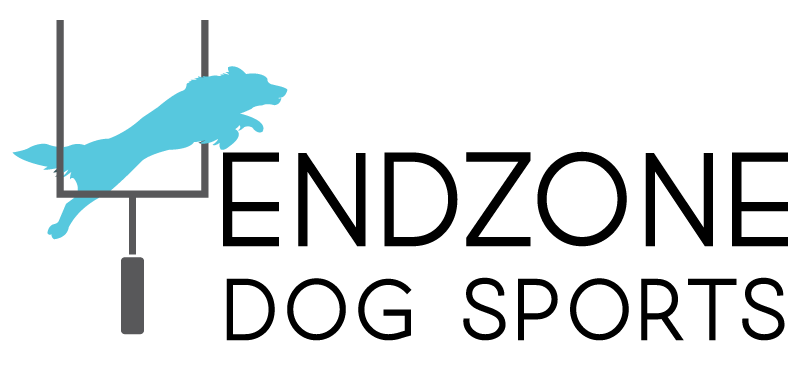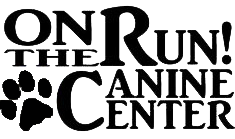
If you’ve been doing agility long enough, you know how fragile the start line is for many dogs. If you’ve never had an issue with your dog’s start line, consider yourself lucky.
In this post, I want to discuss the less-known start line issues – your dog wants to sniff, visit the ring crew or judge, leave the ring, freeze in position, or run mindlessly.
Warning signs
Here are some early warning signs from your dog that might lead to more pronounced issues.
- Your dog looks away from you or the course (towards the entrance/exit, other people, or the ground) as you set them up at the start line.
- Your dog is slow to set up or is slow or not responding to your cues at the start line.
- Your dog moves unenthusiastically to the area (this applies when entering on a leash.)
- When you set up, your dog briefly sniffs on the ground or looks at an area they might want to check out.
Causes
Issues at the start line are typically caused by negative emotions – an abundance of stress, anxiety, confusion, frustration, and a lack of confidence and trust.
Handlers can visualize the start line as a natural transition into sequencing. But most don’t think about how they will handle and then teach their dogs (in a trial) to:
- Enter the ring,
- Set up or line up before leading out,
- When and how to remove the leash (and collar),
- Leave reinforcements behind,
- Run a course with focus and enthusiasm, and
- Exit the ring
Then what happens
Because most handlers don’t think about or teach these skills to their dogs, they end up overhandling, helping, and controlling them from the start to the exit. And since the procedure feels different, uncomfortable, and unpredictable for the dog, entering the trial ring is associated with negative emotions. That causes a stress response that manifests in different ways, depending on the nature of your dog.
If your dog relieves stress by movement, it might disengage and leave the area to sniff or visit someone in the ring. It might just take off running mindlessly around the ring. Unfortunately, many will blame the response on the dog being too social, distracted with things on the ground, or lacking impulse control.
If your dog feels unsafe or concerned about the environment, it might freeze in position – requiring lots of coaxing and encouragement to move from that area.
Of course, when the handler gets frustrated (because they don’t understand why the dog behaves differently in the ring), they might demand more from the dog – attention (watch me), obedience (recall), cheerleading, and verbal corrections. A frustrated handler can demotivate and confuses the dog even more.
Sniffing, visiting, freezing, and mindless or unfocused movement are all responses by the dog to high-stress levels. If you add more fuel to the “stress fire,” these issues will worsen.
Common mistakes
The most common mistake that leads to start line issues is that there wasn’t a plan for training or handling the ring entrance and exit and the routine at the start line. Because there is no plan, the dog doesn’t understand or can’t predict what the handler wants them to do. The dog sees the handler as a completely different person with a different energy than the person they know in training. The communication system has broken down, and the trial environment becomes too challenging for the dog.
How can you change this behavior?
- Stop trialing if you have a problem.
- Develop a ring entrance procedure (from the gate to the start line) that is enjoyable for you and your dog.\
- Teach your dog to set up or line up into any precise position to prepare for a lead-out. This position should be taught separately from sequencing.
- Teach your dog a release cue from that position. Ensure that this release cue is not rushed. It should be isolated from other movements, patterns, or signals. This training is one of the handler’s most challenging parts and is the cause of most issues.
- Teach your dog how to work away from rewards.
The above should be trained separately and not chained together until each piece is fluent and the dog is confident. Once it’s trained, you won’t need to incorporate the entire chain into every practice run. Occasionally put it together or add pieces to your training.
One of the most positive changes you can make is supporting and believing in your dog. Mistakes are due to a lack of training or poor handling choices for that dog. We all make mistakes during the training process. But if your dog isn’t responding as you intended, the question you asked them is too difficult. Your dog won’t lie to you. Believe them when they respond poorly to your cues. Your dog might not be prepared as well as you thought.
And if you are interested in diving deeper into learning how to communicate with your dog and establish a start line routine, take a look at my class next session at FDSA, Building and Maintaining A Start Line. Registration opens on Saturday, July 22nd.
https://www.fenzidogsportsacademy.com/index.php/courses/11671


My dog and I need to take this class now – but it is not being offered ( FENZI) until Feb. ‘24. However – your glue class is coming ( late November). If I get a gold spot – could I focus solely on startline with you?